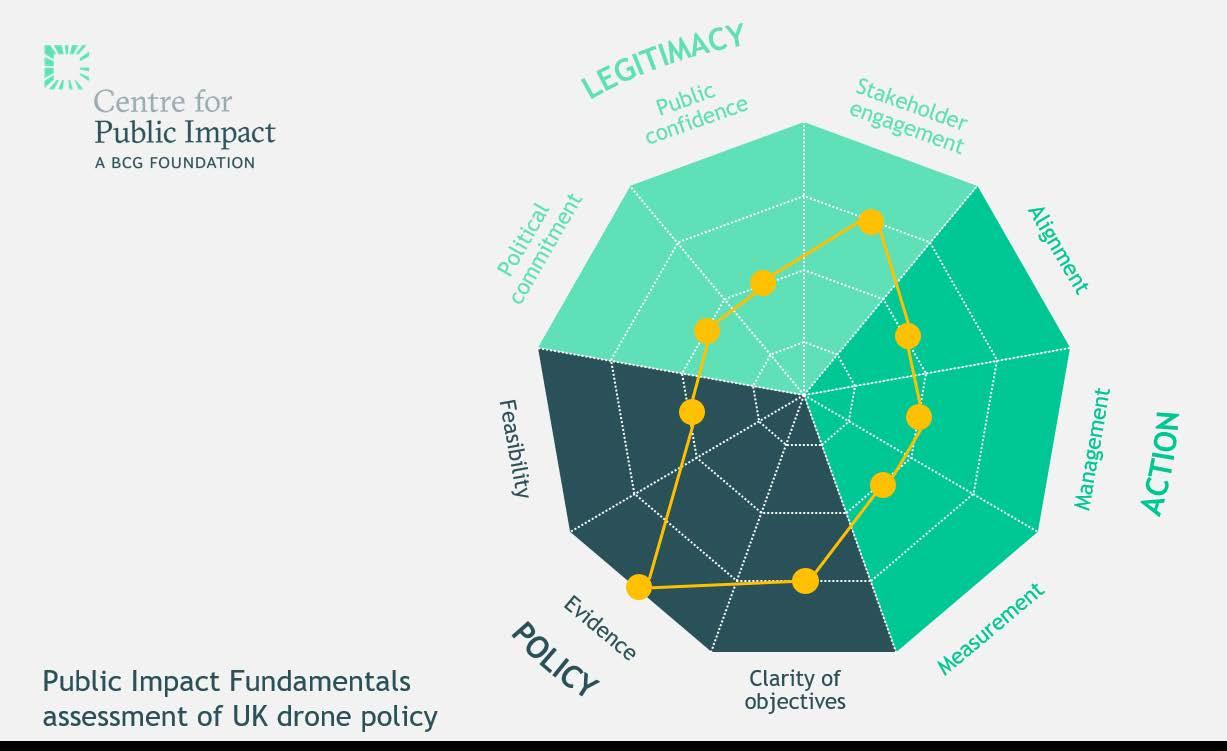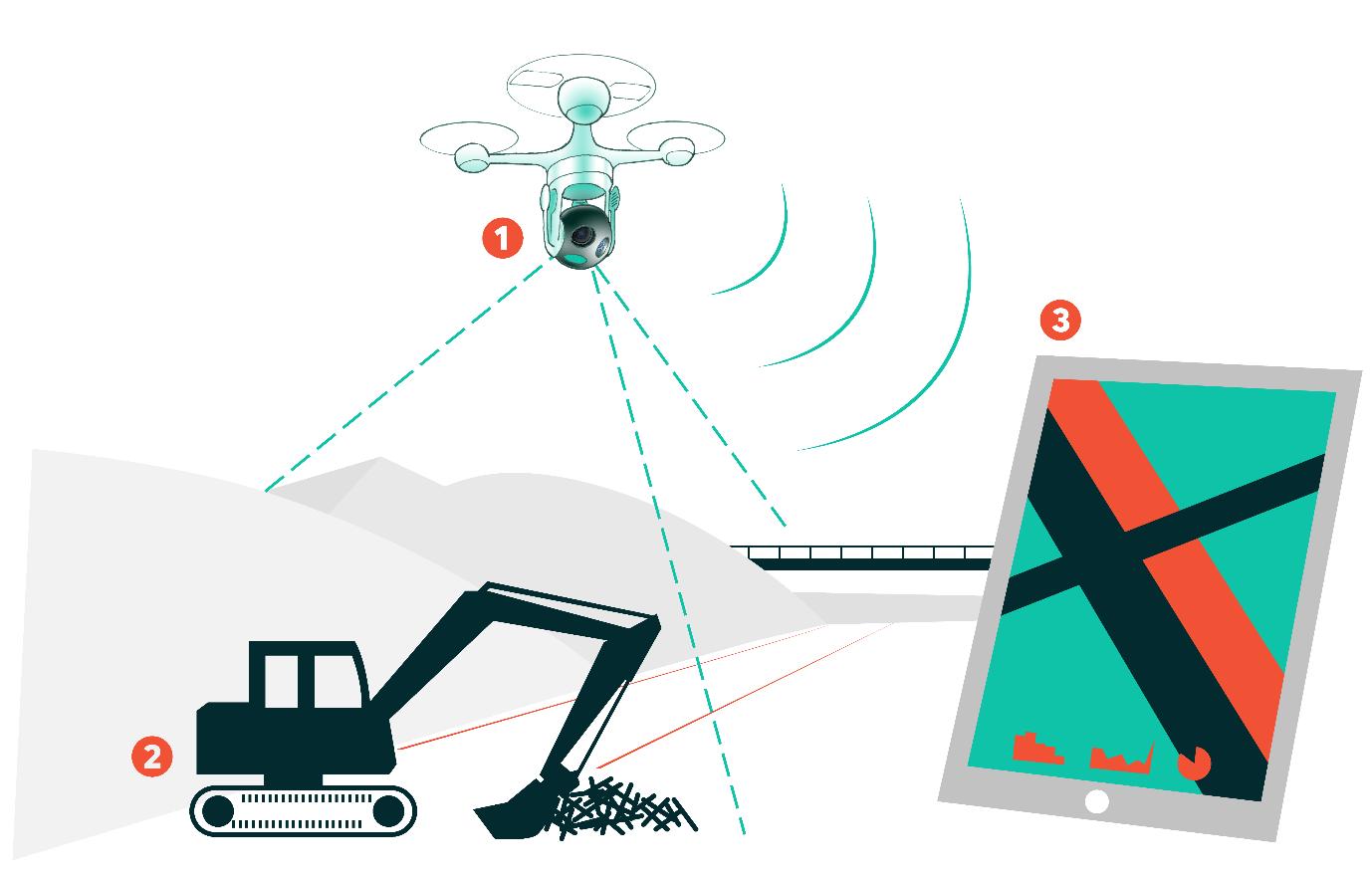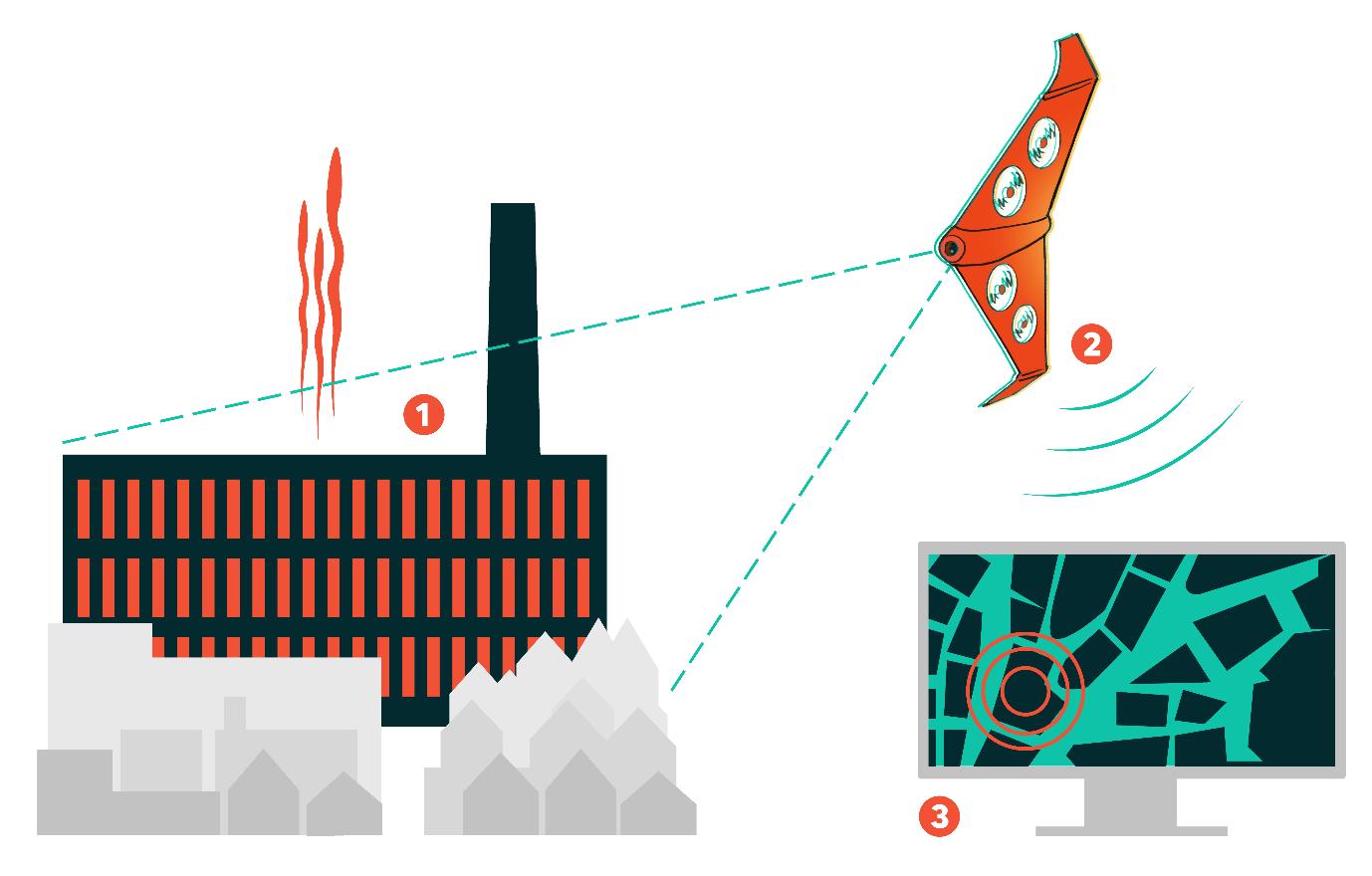
6 minute read
Executive summary
We can take control of the future by solving the key technical and societal hurdles for drones
• Cities are enthusiastic about the potential for drones to deliver societal benefit • Public confidence, technical progress and space to experiment are all needed if we are to move forward • Challenge prizes could help unlock the opportunity Through an engagement with five UK cities, national-level institutions and policy and technology experts, the Flying High project has explored the current state and future possibilities of the use of unmanned aerial vehicles, commonly known as drones, in urban environments in the UK. The project has looked at drones from several contrasting and complementary perspectives - not just technology, but also policy, economics and societal impact. The project has included: • City engagement with five partner cities. • Technical feasibility studies into five applications of drones. • Economic and social feasibility studies of these five applications. • Key stakeholder engagement with national bodies such as regulators. • Industry and research mapping to understand the opportunity for the UK. • Systems research to understand how drones could work at scale in cities. • Public impact analysis to assess the likelihood of future initiatives having the desired outcomes. This is what we have found.
Drones bring benefits to UK cities: they are worth promoting
Cities see an opportunity for drones to support public services
Our work on the place-based aspects of drones has been driven through our engagement with cities, and in particular informed by the five cities (Bradford, London, Preston, Southampton and the West Midlands) with which we partnered. We find a considerable appetite for the use of drones in these cities, and for public service applications in particular.
This is reflected in the five urban drone uses we explore in greater depth. In general there are commonalities in the cities’ visions for the future of drones, particularly in the applications seen as most beneficial, and in concerns around safety, security and privacy. However, we also find significant variation between cities in the particulars of how drones
6
can help them to achieve their goals and fit into their local contexts, as well as the extent to which they have given serious thought to the future of drones up until now.
These city findings are outlined in the city visions published in this report.
Public confidence is key
The public needs to be on side if drones are to be used more widely
The conversation has barely started on what drones should and should not do. Through the Flying High project, cities are starting to think about this, but so far the general public has played only a small role in the discussions. From what we know to date, there is widespread public support for the use of drones for cases of clear social benefit, such as supporting the emergency services, but some suspicion of more speculative uses such as parcel delivery. In the first instance, the focus on drone deployment in cities should be on the uses with the clearest social value. Findings on social value and public confidence emerge throughout this report.
There are technical and regulatory challenges to scale
Among a number of challenges, solving flight beyond the operator’s visual line of sight is key
We have examined the wide array of tasks to which drones can be put. In partnership with five cities, we have selected five socially beneficial use cases in order to explore their technical, social and economic aspects.
These are:
• Medical delivery in London. • Traffic incident response in the West Midlands. • Southampton-Isle of Wight medical delivery. • Construction and regeneration in Preston. • Supporting the fire and rescue service in Bradford. Each of these use cases are technically possible to demonstrate in a limited sense today, but to realise them as everyday, routine services in complex environments requires several key challenges to be overcome. Most of these use cases utilise the capability of drones to cover a lot of ground rapidly and with a degree of automation. That means having drones fly beyond the visual line of sight of an operator. Doing so safely at scale in a busy environment is still a major technical and regulatory challenge. There are also challenges around integrating, validating and regulating autonomy; and developing new infrastructure
7
to safely manage large numbers of low altitude aerial vehicles. These technical and infrastructural challenges are outlined in the five use cases examined in this report.
While there is demand for all of the use cases we investigated, the economics of each application varies: some bring clear cost savings; others bring more in terms of social benefits. Some would be economically feasible even at small scale, while others only become viable when operating at high frequency or volume. The economics of each use case is outlined in the use cases section of the report.
Alongside technological development, regulation needs to evolve to allow these use cases to operate, as outlined in the five use cases as well as the chapter on Exploring urban drone integration.
A vision for the future
Policymakers, technologists and businesses need to align their agenda
There is growing alignment between the key stakeholders - government, industry, regulators - on what the future of drones should look like in the UK. There is considerable evidence that the economic opportunity for the UK is substantial. But this is still a work in progress. Prior to the Flying High project beginning, there was surprisingly little coordination between key players, and cities were largely absent from the discussion.
We need to keep up the momentum - and we urgently need to bring the public into discussions about the future of drones.
Drones are an opportunity for the UK
Get this right, and the UK stands to benefit
Through our industry mapping, engagement with national stakeholders and our work with the five partner cities, we have seen clear evidence that drones are an opportunity for the UK. There is already uptake of drone services in urban areas in the UK and a rapidly growing drone economy.
We have found a thriving drone ecosystem in the UK today, taking in companies that develop drones or drone technologies, provide drone services, and services to the drone industry such as training. The UK also has world-leading drone research and development. These are outlined in an interactive map published alongside this report.
Public opinion also provides an opportunity: views are still forming, but polling shows that socially beneficial uses of drones do have meaningful public support.
Alongside this opportunity, we have also seen a threat: UK policy responses to drones are behind those of leading countries. The US, EU and Singapore in particular have taken bigger steps towards reforming regulations, creating testbeds and supporting businesses with innovative ideas.
8
These findings are outlined in the chapter of this report on the opportunity for the UK.
So what needs to happen?
A programme of challenge prizes would accelerate solutions to complex and interconnected issues
The proposed next phase of the Flying Project is a series of major challenge prizes built around creating real-world trials to demonstrate the use cases that we have investigated. This process would drive innovation to address the key technical barriers to drone development, while forming the core of a continued programme of public and wider stakeholder engagement. Brought together, this can unlock the opportunity for the UK.
In addition to the challenge prizes, we recommend that regulation be updated to reflect advances in drone technology, particularly around management of urban airspace; and investment in the infrastructure that drones will need if they are ever to operate at large scale.
9









